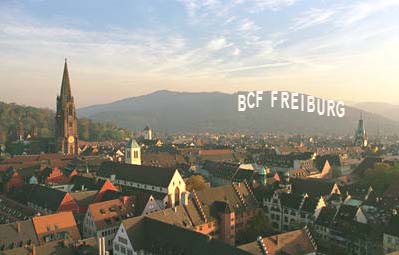Wolfgang Taube (Movement and Sport Sciences, Department of Medicine, University of Fribourg, CH)
"Motor control of voluntary movements – and their adaptability" / Tuesday, February 17, 2015 17:15 h
|
Bernstein Center Freiburg
Bernstein Seminar
|
 |
|
Wolfgang Taube
Movement and Sport Sciences, Department of Medicine
University of Fribourg, CH Motor control of voluntary movements
– and their adaptability |
|
|
Tuesday, February 17, 2015 17:15 h |
Lecture Hall (ground floor) Bernstein Center Freiburg Hansastraße 9a 79104 Freiburg |
|
Abstract:
Human motor control enables all kinds of motor actions from simple reflexes to highly complex manipulative skills. The central nervous system (CNS) is challenged to move the body in a three dimensional environment by coordinating activity of up to 600 muscles. Most actions therefore require profound MOTOR PLANNING. Thus, before motor cortical neurons are activated, input from other centres is necessary. In voluntary actions, one key input reaches the motor cortex from the presupplementary motor area, which in turn receives inputs from the basal ganglia and the prefrontal cortex (Haggard, 2008; Nat Rev Neurosci). Interestingly, the onset of activity in these areas was shown to precede the time when subjects became aware of their motor decision.
After motor planning, the MOTOR COMMAND is released. Recent studies indicated that motor commands for dynamic muscle activation differ from motor commands responsible for tonic contractions. Beck et al. (2008; J Neurosci) demonstrated that at the onset of dynamic movements, excitation of the motor cortex (M1) is spatially restricted to areas representing the involved muscles whereas adjacent areas are inhibited. Apart from the ´spatial restriction` there seems also to be a ´temporal restriction` indicated by preferential activation of cortical neurons responsible for fast corticospinal projections (Taube et al. 2011; PLoS ONE). The functional significance of such a cortical activation pattern may be a temporally focused motor command. Although the release of the cortical motor command will cause a movement, this movement would most often not result in the desired consequences without the help of SENSORY FEEDBACK. This can easily be seen in patients with loss of proprioceptive feedback who are not able to adequately control posture, locomotion and other motor tasks. Thus, sensory feedback is required to ensure that the motor command in fact causes the predicted consequences. However, sensory feedback is not only used to detect movement errors but also to maximise power output. For instance, in plyometric movements the integration of sensory feedback is used to provide adequate muscle stiffness and allow elastic properties. An appropriate integration of sensory feedback as well as a proper conceptualization of the motor command can only be achieved by FEEDFORWARD MOVEMENT CONTROL. Especially fast and ballistic movements rely on feedforward control. On a behavioural level, inaccuracy of feedforward control can be demonstrated by ´aftereffects`, where a specific movement pattern is preserved although the environmental context has changed. On the level of the CNS, the cerebellum plays a crucial role in adapting feedforward control (Bastian, 2006; Curr Opin Neurobiol). The talk will give a short overview about the stages and corresponding neural substrates, which are necessary for a successful motor control, i.e. motor planning, conceptualization of context specific motor commands, processing of sensory feedback and operation of feedforward control. |
|
|
Host: Christian Leukel
|
|
|
The talk is open to the public. Guests are cordially invited!
www.bcf.uni-freiburg.de |
|
      |
|
abgelegt unter:
Bernstein Seminar

